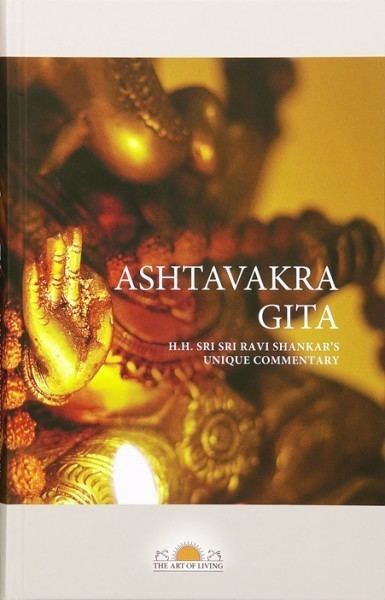 | ||
Similar Advaita Vedanta books, Other books | ||
The Ashtavakra Gita (Sanskrit in Devanagari: अष्टावक्रगीता; IAST: aṣṭāvakragītā) or the Song of Ashtavakra is a classical Advaita Vedanta scripture. It is written as a dialogue between the sage Ashtavakra and Janaka, king of Mithila.
Contents
Dating
Radhakamal Mukerjee, an Indian social scientist, dated the book to the period immediately after the Hindu scripture Bhagavad Gita (c. 500–400 BC). J. L. Brockington, emeritus Professor of Sanskrit at the University of Edinburgh, places the Ashtavakra Gita much later, supposing it to have been written either in the eighth century AC by a follower of Shankara, or in the fourteenth century during a resurgence of Shankara's teaching. Sri Swami Shantananda Puri suggests that since the book contains the seed of the theory of non-creation Ajata Vada developed later by Gaudapada in Mandookya Karika, this book comes from a period prior to that of Gaudapada and hence prior to Adi Shankara.
Identification of Ashtavakra
Ashtavakra is probably identical to the holy sage with the same name who appears in Mahabharata, though the connection is not clearly stated in any of the texts. Mukherjee identifies Janaka as the father of Sita and disciple of the sage Yajnavalkya in the Brihadaranyaka Upanishad. Janaka is also depicted as a king who has attained perfection in the Bhagavad Gita (III,20,25).
Overview
Ashtavakra Gita is a dialogue between Ashtavakra and Janaka on the nature of soul, reality and bondage. It offers a radical version of non-dualistic philosophy. The Gita insists on complete unreality of external world and absolute oneness of existence. It does not mention any morality or duties, and therefore is seen by commentators as 'godless'. It also dismisses names and forms as unreal and a sign of ignorance.
In a conversation between Janaka and Ashtavakra, pertaining to the deformity of his crooked body, Ashtavakra explains that the size of a Temple is not affected by how it is shaped, and the shape of his own body does not affect himself (or Atman). The ignorant man's vision is shrouded by names and forms but a wise man sees only himself:
You are really unbound and action-less, self-illuminating and spotless already. The cause of your bondage is that you are still resorting to stilling the mind. (I.15)
You are unconditioned and changeless, formless and immovable, unfathomable awareness, imperturbable- such consciousness is un-clinging. (I.17)
You are not bound by anything. What does a pure person like you need to renounce? Putting the complex organism to rest, you can go to your rest. (V.1)
Structure
The book comprises 20 chapters:
Appreciation
The work was known, appreciated and quoted by Ramakrishna and his disciple Vivekananda, as well as Ramana Maharshi. Sarvepalli Radhakrishnan refers to it with great respect.
Translations and commentaries
Nath (1907) opened the discourse of this Gita into the English language. Mukerjee (1889–1968) continued the discourse into English with his posthumous work published in 1971. Stroud (2004) wrote on the Astavakra Gita as a work of multivalent narrative.
Swami Chinmayananda wrote a commentary on the Ashtavakra Gita, which has references to the Upanishads to help convey the meaning of the text.
Sri Sri Ravi Shankar has given commentary on Ashtavakra Gita in Hindi and English Language.
Commentaries on this work, have been also been provided by Osho
